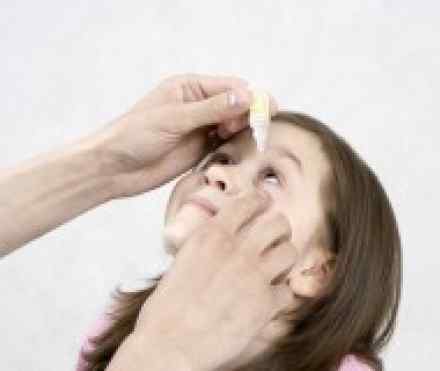
What is it?
- Blepharitis is inflammation that affects the eyelids. Blepharitis usually involves the part of the eyelid where the eyelashes grow.
- Blepharitis occurs when tiny oil glands located near the base of the eyelashes malfunction. This leads to inflamed, irritated and itchy eyelids. Several diseases and conditions can cause blepharitis.
- Blepharitis is often a chronic condition that is difficult to treat. Blepharitis can be uncomfortable and may be unattractive, but it usually doesn't cause permanent damage to eyesight.
Symptoms
Signs and symptoms of blepharitis include:
- Watery eyes
- Red eyes
- A gritty, burning sensation in the eye
- Eyelids that appear greasy
- Itchy eyelids
- Red, swollen eyelids
- Flaking of the skin around the eyes
- Crusted eyelashes upon awakening
- Sensitivity to light
- Eyelashes that grow abnormally (misdirected eyelashes)
- Loss of eyelashes
Causes
Blepharitis occurs when tiny oil glands located near the base of the eyelashes malfunction. Blepharitis is often a chronic condition, meaning that it may require long-term care.
Diseases and conditions that can cause blepharitis include:
- Seborrheic dermatitis — dandruff of the scalp and eyebrows
- A bacterial infection
- Malfunctioning oil glands in your eyelid
- Rosacea — a skin condition characterized by facial redness
- Allergies, including allergic reactions to eye medications, contact lens solutions or eye makeup
- Eyelash mites
Blepharitis may be caused by a combination of factors.
Complications
If you have blepharitis, you may experience:
- Eyelash problems. Blepharitis can cause your eyelashes to fall out or grow abnormally (misdirected eyelashes).
- Eyelid skin problems. Scarring may occur on your eyelids in response to long-term blepharitis.
- Sty. A sty is an infection that develops near the base of the eyelashes. The result is a painful lump on the edge or inside of your eyelid. A sty is usually most visible on the surface of the eyelid.
- Chalazion. A chalazion occurs when there's a blockage in one of the small oil glands at the margin of the eyelid, just behind the eyelashes. The gland can become infected with bacteria, which causes a red, swollen eyelid. Unlike a sty, a chalazion tends to be most prominent on the inside of the eyelid.
- Excess tearing or dry eyes. Abnormal oily secretions and other debris shed from the eyelid, such as flaking associated with dandruff, can accumulate in your tear film — the water, oil and mucus solution that forms tears. Abnormal tear film interferes with the healthy lubrication of your eyelids. This can irritate your eyes and cause dry eyes or excessive tearing.
- Chronic pink eye. Blepharitis can lead to recurrent bouts of pink eye (conjunctivitis).
- Injury to the cornea. Constant irritation from inflamed eyelids or misdirected eyelashes may cause a sore (ulcer) to develop on your cornea. Insufficient tearing could predispose you to a corneal infection.
Diagnosis
- Examining your eyelids. Your doctor will carefully examine your eyelids and your eyes. He or she may use a special magnifying instrument during the examination.
- Swabbing skin for testing. In certain cases, your doctor may use a swab to collect a sample of the oil or crust that forms on your eyelid. This sample can be analyzed for bacteria, fungi or evidence of an allergy.
Treatments and drugs
Treatment for blepharitis can include:
- Cleaning the affected area regularly. Cleaning your eyelids with a warm washcloth can help control signs and symptoms. Self-care measures may be the only treatment necessary for most cases of blepharitis.
- Antibiotics. Eyedrops containing antibiotics applied to your eyelids may help control blepharitis caused by a bacterial infection. In certain cases, antibiotics are administered in cream, ointment or pill form.
- Steroids eyedrops or ointments. Eyedrops or ointments containing steroids can help control inflammation in your eyes and your eyelids.
- Artificial tears. Lubricating eyedrops or artificial tears, which are available over-the-counter, may help relieve dry eyes.
- Treating underlying conditions. Blepharitis caused by seborrheic dermatitis, rosacea or other diseases may be controlled by treating the underlying disease.
Blepharitis rarely disappears completely. Even with successful treatment, relapses are common.
Lifestyle remedies
Clean your eyes dailyIf you have blepharitis, follow this self-care remedy once or twice a day:
- Apply a warm compress over your closed eye for five minutes to loosen the crusty deposits on your eyelids.
- Immediately afterward, use a washcloth moistened with warm water and a few drops of baby shampoo to wash away any oily debris or scales at the base of your eyelashes.
- In some cases, you may need to be more deliberate about cleaning the edge of your eyelid where your eyelashes are located. To do this, pull your eyelid away from your eye and use the washcloth to gently wash the area. This helps avoid damaging your cornea with the washcloth. Ask your doctor whether you should use a topical antibiotic ointment after cleaning your eyelids in this way.
- Rinse your eyelid with warm water and gently pat it dry with a clean, dry towel.
Continue this treatment until your signs and symptoms disappear. Although you may be able to decrease the frequency of eyelid soaking and washing, you should maintain an eyelid care routine to keep the condition under control. If you experience a flare-up, resume once or twice daily self-care treatment.
Control dandruff
If you have dandruff that's contributing to your blepharitis, ask your doctor to recommend a dandruff shampoo. Using a dandruff-controlling shampoo may relieve your blepharitis signs and symptoms.
References:
http://www.allaboutvision.com/conditions/blepharitis.htm
https://en.wikipedia.org/wiki/Blepharitis
https://nei.nih.gov/health/blepharitis/blepharitis
http://www.aao.org/eye-health/diseases/what-is-blepharitis
http://www.aao.org/eyenet/article/managing-blepharitis-tried-true-new-approaches?july-2012
http://patient.info/health/blepharitis-leaflet


